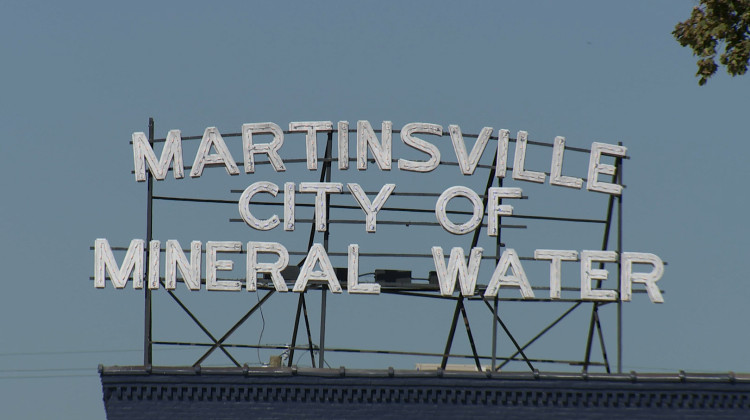
Water underground contaminated with PCE and TCE got into the soil in Martinsville. Now polluted air from the soil is seeping into homes and businesses.
Devan Ridgway / WTIUCommunity members and university researchers want to know how industrial pollution in Martinsville has affected residents’ health. A study could help many other communities in Indiana affected by the chemicals suspected of making people sick — PCE and TCE.
What are these chemicals and how did they pollute Martinsville?
These chemicals are used in dry cleaning and industrial processes. Most of the Superfund sites in Indiana are contaminated with these chemicals — even if they’re not the main concern.
Water underground contaminated with PCE and TCE got into the soil in Martinsville. Now polluted air from the soil is seeping into homes and businesses. The Agency for Toxic Substances and Disease Registry has said the city's treated drinking water is safe.
The Environmental Protection Agency announced a cleanup plan to address the pollution in Martinsville just three years ago. It’s been on the EPA’s National Priorities List since 2013 and the agency has known about the contamination since at least 2004.
READ MORE: Martinsville residents still at risk from old contaminants
What does the health study aim to find out?
While we know how these chemicals can harm people working with them, we don’t know much about what happens when you’re exposed to small amounts over time. That's what researchers with Purdue University, Indiana University and the University of Illinois-Chicago aim to find out.
Local teacher Stephanie Littell said three children in Martinsville have been diagnosed with the rare cancer, Ewing’s sarcoma. Other members of the community have had things like rare brain tumors, rare stomach cancers and multiple myeloma. The chemicals are also thought to be responsible for childhood cancers in Franklin.
READ MORE: Inspired by Indiana parent, EPA aims to ban another cancer-causing chemical
Littell is helping gather participants to test everything from their breath to their memory and ability to learn. She and her children all had PCE in their breath — even though they didn’t live near the source of the pollution.
“I think that the results are shocking us, really, to see that it's not necessarily the people who live in these toxic plume areas. It's kind of everywhere," Littell said.
Join the conversation and sign up for the Indiana Two-Way. Text "Indiana" to 765-275-1120. Your comments and questions in response to our weekly text help us find the answers you need on climate solutions and climate change at ipbs.org/climatequestions.
Martinsville residents can have a say in what to do about PCE and TCE
Community member Bethaney Latham said, once the study is done, residents will help come up with an action plan. She said that could look like keeping residents up-to-date on the health of the community or finding ways residents can protect themselves.
“It could be cleaning products that they use in their homes, allowing cans of paint and such to stay in their garage or their laundry room — or other things like this that could be increasing their exposure to these chemicals," Latham said.
Residents who take part in the study can get up to $95 and a report of their test results. You can find out more about the Martinsville Environmental Community Action Project on the project's website.
This story has been updated to correct a copy editing error.
Rebecca is our energy and environment reporter. Contact her at rthiele@iu.edu or follow her on Twitter at @beckythiele.
 DONATE
DONATE






 Support WFYI. We can't do it without you.
Support WFYI. We can't do it without you.